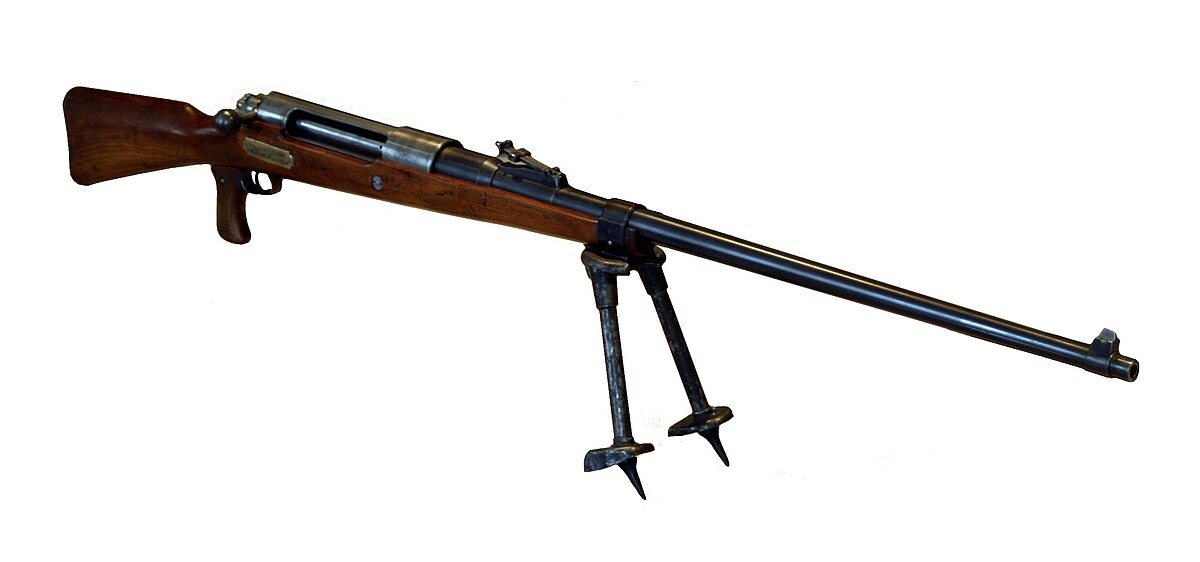Reading an article on Tank Killers on the Western Front (WWI)....
"The T Rifle
By March 1917, British tank design had progressed to a point where special steel plates fitted on tanks could defeat the armor-piercing capability of the K bullets. The Germans took up the challenge by inventing an antitank rifle known as the Tank Abwehr Gewehr. A military version of the prewar elephant gun, the Mauser-built T Rifle, as it was commonly called, was five feet, five inches long, weighed 37 pounds, and used a 13.7mm round. Effective at a range of 120 yards, it required a two-man crew to lug it and its ammunition. Its limited range, which exposed shooters to retaliatory action, as well as its neck-breaking recoil, made the weapon very inaccurate and unpopular with the troops. The men who had to operate the beast discovered that grouping four to six of the rifles just behind the first trench system was the most effective way to use the T Rifle. Experience showed that its best employment was against tanks that had broken through the front and could be stalked using natural or manmade cover."
- Warfare History Network
13.2 mm Rifle Anti-Tank (Mauser)

Imperial German Army soldiers firing a Mauser 1918 T-Gewehr

Comparison of a standard .303 British rifle cartridge and a 13.2 mm T-Gewehr cartridge

Examples of the Mauser 1918 anti-tank rifle can be found in several museums:
Including...
Museo de Armas, Circulo Militar, Buenos Aires

 en.wikipedia.org
en.wikipedia.org
"The T Rifle
By March 1917, British tank design had progressed to a point where special steel plates fitted on tanks could defeat the armor-piercing capability of the K bullets. The Germans took up the challenge by inventing an antitank rifle known as the Tank Abwehr Gewehr. A military version of the prewar elephant gun, the Mauser-built T Rifle, as it was commonly called, was five feet, five inches long, weighed 37 pounds, and used a 13.7mm round. Effective at a range of 120 yards, it required a two-man crew to lug it and its ammunition. Its limited range, which exposed shooters to retaliatory action, as well as its neck-breaking recoil, made the weapon very inaccurate and unpopular with the troops. The men who had to operate the beast discovered that grouping four to six of the rifles just behind the first trench system was the most effective way to use the T Rifle. Experience showed that its best employment was against tanks that had broken through the front and could be stalked using natural or manmade cover."
- Warfare History Network
13.2 mm Rifle Anti-Tank (Mauser)

Imperial German Army soldiers firing a Mauser 1918 T-Gewehr

Comparison of a standard .303 British rifle cartridge and a 13.2 mm T-Gewehr cartridge

Examples of the Mauser 1918 anti-tank rifle can be found in several museums:
Including...
Museo de Armas, Circulo Militar, Buenos Aires





















